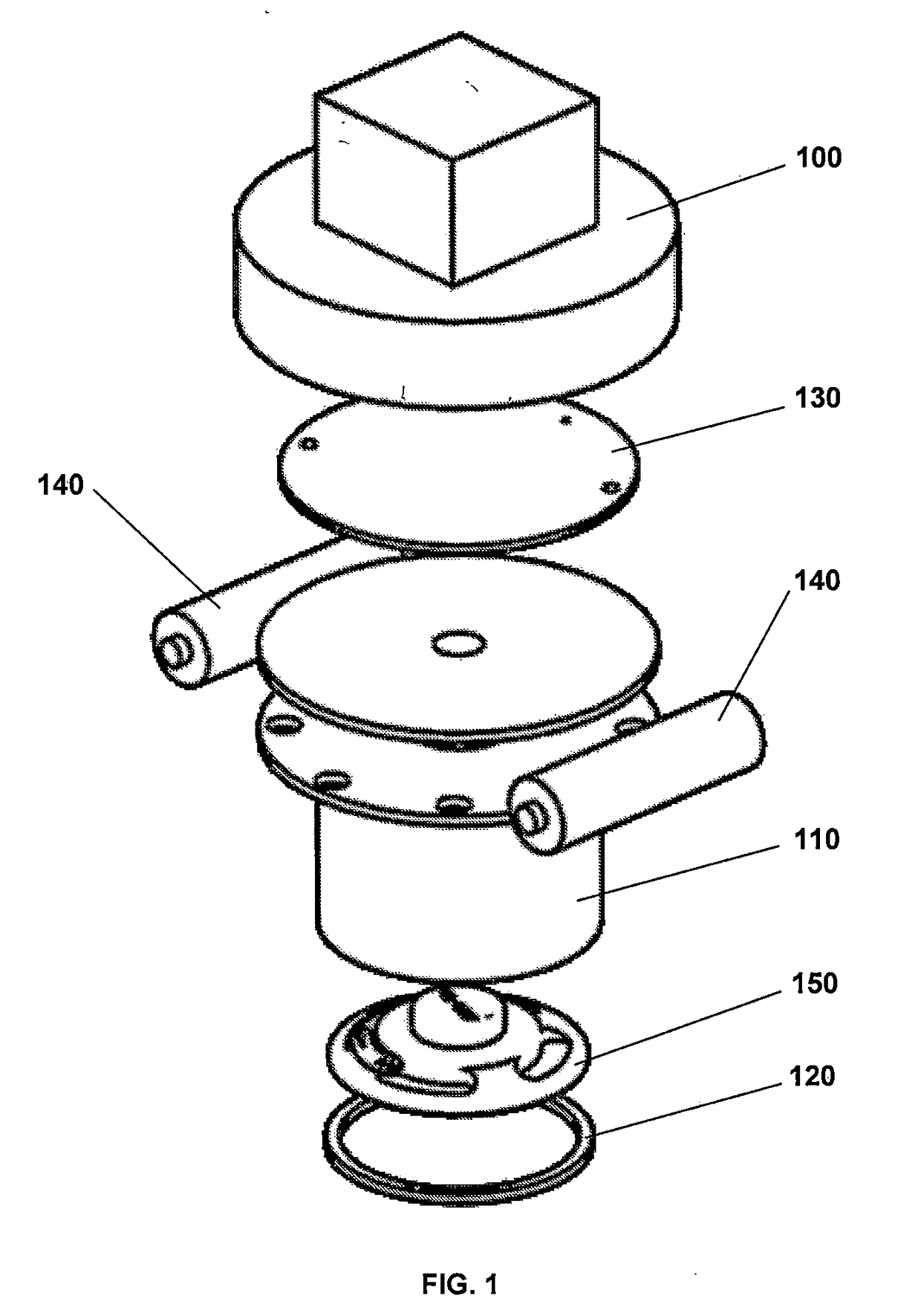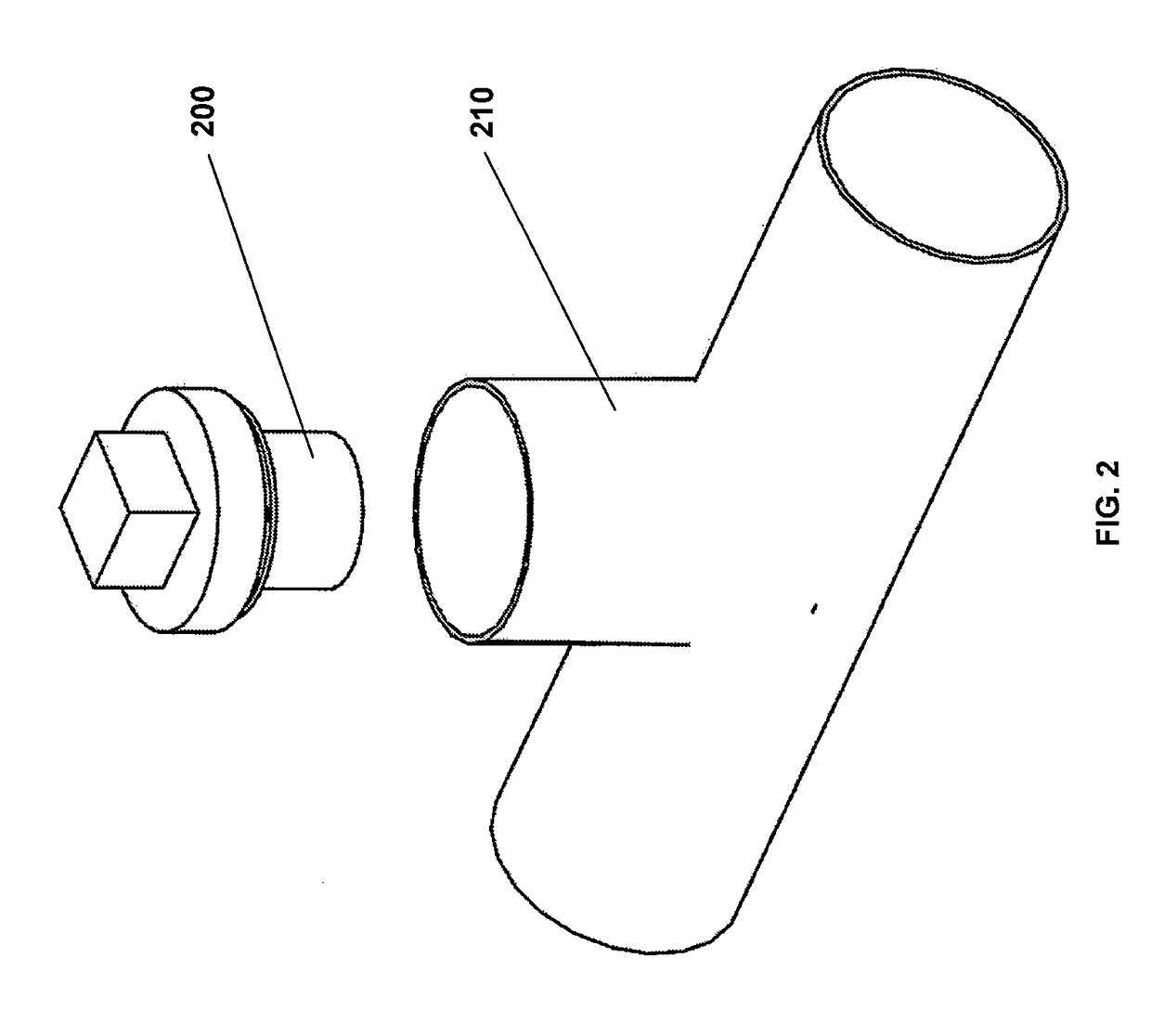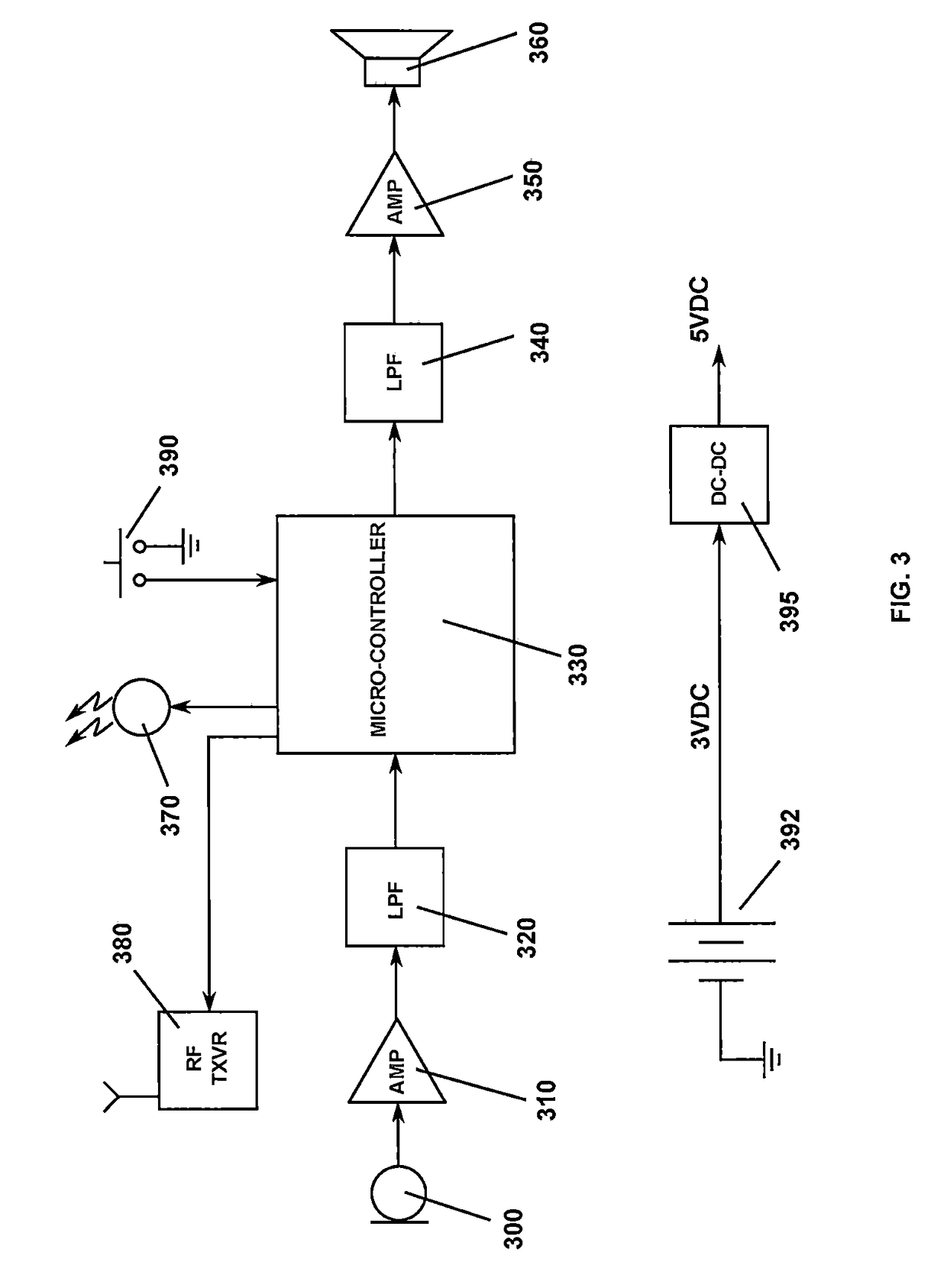System and Method for Detecting Broken or Clogged Drainage Pipe Structures
a drainage pipe and structure technology, applied in the direction of service pipe systems, fluid detection at leakage points, mechanical devices, etc., can solve the problems of damage already occurring, failure to achieve the intended purpose, repair or replace the damaged property, etc., and achieve the effect of low power and simple implementation and installation
- Summary
- Abstract
- Description
- Claims
- Application Information
AI Technical Summary
Benefits of technology
Problems solved by technology
Method used
Image
Examples
Embodiment Construction
[0026]The invention described more fully herein may be embodied in many different forms and should not be construed as limited to the embodiments set forth herein; rather, this embodiment is provided so that this disclosure will satisfy legal requirements. It is understood that various omissions and substitutions of equivalents are contemplated as circumstances may suggest or render expedient, but these are intended to cover the application or implementation without departing from the spirit or scope of the claims of the present invention. Phraseology and terminology used to describe the invention herein is not to be misconstrued as limiting.
[0027]As shown in FIG. 1. the invention is housed such that it mounts onto a standard sized access port pipe cap, element 100, typical of the field used in septic and sewer drainage systems. A printed circuit board (PCB), element 130 and batteries, elements 140, are mounted toward the upper end of the housing and where the batteries reside in th...
PUM
 Login to View More
Login to View More Abstract
Description
Claims
Application Information
 Login to View More
Login to View More - R&D
- Intellectual Property
- Life Sciences
- Materials
- Tech Scout
- Unparalleled Data Quality
- Higher Quality Content
- 60% Fewer Hallucinations
Browse by: Latest US Patents, China's latest patents, Technical Efficacy Thesaurus, Application Domain, Technology Topic, Popular Technical Reports.
© 2025 PatSnap. All rights reserved.Legal|Privacy policy|Modern Slavery Act Transparency Statement|Sitemap|About US| Contact US: help@patsnap.com



